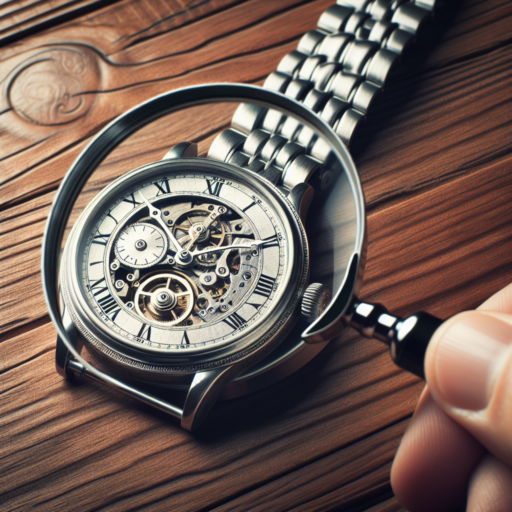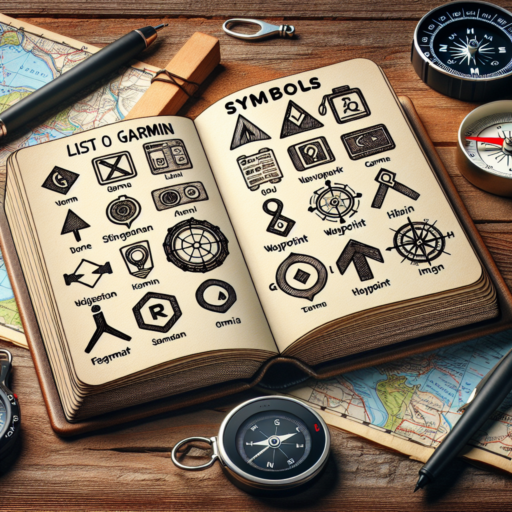Understanding the Significance of Your Watch’s Serial Number
The serial number on your watch is far more than just a random string of digits. It holds the key to your watch’s identity, revealing its manufacturing history, authenticity, and much more. This unique identifier is what sets your timepiece apart from others, making it an essential aspect for collectors, enthusiasts, and anyone interested in the provenance and lineage of their watch.
Decoding the Manufacturing Date
One of the primary significances of a watch’s serial number is its ability to pinpoint the manufacturing date. By decoding this number, enthusiasts can determine the exact period during which their watch was crafted. This information is invaluable for assessing value, understanding historical context, and ensuring that the watch is a genuine article, not a later reproduction or counterfeit.
Verifying Authenticity and Ownership
Beyond historical curiosity, the serial number serves as a critical tool for verifying the authenticity of a watch. Manufacturers often maintain detailed records of their watches’ serial numbers, which can be used to confirm whether a watch is genuine. Furthermore, in the unfortunate event of theft, the serial number can help in the recovery of your watch, acting as a definitive marker of ownership that is nearly impossible to replicate or erase.
Understanding your watch’s serial number is akin to unlocking a personal piece of horological history. It not only enriches your connection to the timepiece but also enhances its value, both sentimental and monetary. Knowing the significance of this number ensures that you fully appreciate the craftsmanship, heritage, and unique story your watch represents.
How to Find the Serial Number of Your Watch
Finding the serial number of your watch can be crucial for a variety of reasons, such as verifying authenticity, for insurance purposes, or when seeking repairs. The serial number is a unique identifier for your watch and knowing where to locate it is key.
Check the Back Case
The most common location for a watch’s serial number is on the back case. Carefully remove your watch and inspect the back for any engraved numbers. These numbers are typically found either around the edges or directly in the center. For watches that have a transparent back, the serial number might be printed on the movement inside.
Look Inside the Documentation
If you have kept the original packaging and paperwork that came with your watch, finding the serial number might be easiest here. Manufacturers often include the serial number on the warranty card or within the instruction manual. This method ensures you’re not handling the watch excessively, especially if it’s a delicate or vintage piece.
Remember, the process can vary slightly depending on the brand and model of your watch. In some cases, the serial number may also be located under the bracelet, or require a jeweler’s tools to access. When in doubt, consulting with the watch’s manufacturer or a professional watchmaker can provide clarity and assistance in identifying your watch’s unique serial number.
Decoding the Mystery: What Your Watch’s Serial Number Reveals
Every watch tells a story, not just through its design and functionality, but through the unique digits etched into it – the serial number. This cryptic sequence holds more than just manufacturing details; it’s a gateway to uncovering the rich history and authenticity of your timepiece. By decoding the serial number, watch enthusiasts can unlock fascinating insights into their watch’s past, including its production date, materials used, and its journey through time.
The serial number on a watch serves as its fingerprint, distinct and informative. Manufacturers use these numbers not just for identification purposes but also as a means to enhance security and prevent counterfeiting. Whether you own a vintage piece passed down through generations or a modern marvel of horology, knowing how to decipher this number can significantly enhance your appreciation of the watch. It transforms an everyday accessory into a narrative piece that carries the weight of its origins and craftsmanship.
Unveiling the Significance of Each Digit
The composition of a serial number varies from brand to brand, with each manufacturer assigning their own format and meaning to the digits. Typically, the sequence might include information such as the model reference, the watch’s place in the production line, and the year or period of manufacture. For collectors and enthusiasts, understanding these nuances can be crucial in verifying a watch’s provenance and ensuring its authenticity. Highlighted below are key aspects typically encoded in serial numbers:
- Production Year: Often, one or two digits signify the year the watch was made, which can be pivotal in assessing its value and rarity.
- Model Reference: Part of the serial number may correspond to the specific model or design of the watch, offering insights into its features and production specifics.
- Manufacturing Sequence: The serial number can also reveal where the watch falls in the production run, indicating its uniqueness among other models.
The Impact of Serial Numbers on the Value of Your Watch
The serial number of a watch is far more than just a sequence of digits; it’s akin to its DNA. This unique identifier not only authenticates the watch but also offers a treasure trove of information, significantly influencing its worth in the collector’s market. Understanding the nuances of how these numbers affect value can be a key factor for collectors and enthusiasts alike.
First and foremost, the presence of a serial number solidifies a watch’s provenance, linking it unmistakably to its manufacturer and tying it to a specific production year or era. Collectors are often willing to pay a premium for watches that can be conclusively traced back to their origins, making the serial number a pivotal piece of the puzzle. Notably, certain numbers or sequences are considered more desirable, either due to rarity, historical significance, or association with iconic models or figures.
Moreover, the condition and visibility of the serial number itself can greatly affect the watch’s value. A watch with a clearly legible, unaltered serial number is generally more valuable than one with a faded or tampered-with identifier. This detail assures potential buyers of the watch’s authenticity and can also indicate that the piece has been well cared for or sparingly used over the years.
A Step-by-Step Guide to Verifying Your Watch’s Authenticity Through Its Serial Number
Verifying the authenticity of a watch through its serial number is a crucial step for collectors and enthusiasts alike. This guide outlines the essential steps to ensure the watch you’ve set your eyes on or already own, is genuine. Understanding this process not only safeguards your investment but also deepens your appreciation for the intricate world of timepieces.
Step 1: Locate the Serial Number
Every authentic watch comes engraved with a unique serial number, often found on the watch’s case back or at the edge of the case where it meets the bracelet. This number is the watch’s fingerprint, a unique identifier that separates it from replicas and forgeries. Manufacturers might place it in different locations, so consulting the brand’s official website for guidance is advisable.
Step 2: Use Brand-Specific Resources
Once you have the serial number, the next step is to verify its authenticity. Many luxury watch manufacturers offer an online service or a direct line to check the serial number against their database. Accessing this service often requires visiting the brand’s official website. For even more accurate verification, visiting an authorized dealer or an official brand boutique might be the best course of action.
Step 3: Understand the Results
After verifying the serial number, it’s crucial to understand the information provided. Authentic watches will come up with matching data on the brand’s database, confirming the model, manufacturing date, and perhaps even the original sale. If discrepancies appear or the serial number doesn’t exist in their records, it might be a sign of a counterfeit watch. In such cases, seeking expert assistance or a second opinion is highly recommended.
Comparing Serial Numbers: How to Determine the Age and Origin of Your Watch
Understanding the age and origin of your watch can be a fascinating journey into its history and craftsmanship. Serial numbers, often overlooked, are the silent storytellers of your watch’s past. By comparing these unique codes, watch enthusiasts can unlock details about when and where their cherished timepieces were crafted.
Step 1: Locating the Serial Number
The first step in comparing serial numbers is finding them on your watch. Typically, they are engraved on the case back, the side, or at the end of the watch lugs. High-end watches often require a jeweler’s tool to open the case back and reveal the serial number. Remember, the placement and visibility might differ depending on the brand and the model of your watch.
Step 2: Using Brand-Specific Databases
Once you have located the serial number, the next step is to consult brand-specific databases. Many luxury watch manufacturers provide online tools or customer service assistance to help you decipher the code. This step can reveal not just the year of production but potentially the model and the exact place of manufacture. It’s worth noting that for vintage watches, forums and collector groups can be invaluable resources for comparing numbers and determining a watch’s history.
Comparing serial numbers is more than just an exercise in curiosity; it’s a quest for connection to the art and history of watchmaking. Each number holds clues to the craftsmanship and heritage that define luxury timepieces. By taking the time to explore these details, enthusiasts gain not only insights into their watch’s past but also a deeper appreciation for the mastery behind it.
Serial Numbers and Watch Warranty: What You Need to Know
Understanding the relationship between serial numbers and watch warranties is crucial for every watch owner. Serial numbers serve as a unique identifier for your timepiece, making it identifiable by the manufacturer and verifying its authenticity. This becomes particularly important when dealing with warranty claims, repairs, or servicing.
Why Serial Numbers Matter
Serial numbers are not just arbitrary figures stamped on your watch; they hold vital information concerning the model, production year, and sometimes even the specific batch of manufacture. This data is invaluable when assessing warranty coverage because it helps determine whether the watch falls within the eligible warranty period. Additionally, in the unfortunate event of theft, the serial number is essential for tracking and possibly recovering the stolen item.
Warranty Claims and Serial Numbers
When it comes to warranty claims, the serial number on your watch is your ticket to accessing manufacturer support. Typically, a warranty will cover manufacturing defects or malfunctions, but it’s the serial number that validates your watch’s warranty status. Be advised, altering or removing the serial number can void your warranty, underlining the importance of keeping your watch in its original condition. Moreover, for watches that come with a digital warranty card, the serial number is often required for online registration and warranty activation. )
Exploring the World of Collectible Watches: The Role of Serial Numbers
When delving into the intriguing world of collectible watches, the importance of serial numbers cannot be overstated. These unique identifiers do far more than just differentiate one timepiece from another; they hold the key to a watch’s history, authenticity, and ultimately, its value. Collectors and enthusiasts alike prize serial numbers as vital tools in the authentication process, offering a glimpse into the watch’s provenance and rarity.
The Historical Significance of Serial Numbers
Serial numbers on collectible watches serve as a bridge to their past, telling stories that are often centuries old. Manufacturers have long used these numbers to track production dates and models, making them invaluable for verifying a watch’s age and model. This aspect of serial numbers is particularly critical for collectors seeking pieces from specific eras or limited-edition runs, as it directly impacts the collectible’s value and desirability.
Serial Numbers and Authenticity Verification
For collectors, the authenticity of a collectible watch is paramount. Serial numbers play a pivotal role in this verification process. A genuine serial number matched with a manufacturer’s records can confirm the authenticity of a watch, distinguishing it from replicas and forgeries. Experts, with their in-depth knowledge and databases, can decode these numbers to reveal detailed information about the watch’s origin, making serial numbers a fundamental aspect of the collector’s world.
Moreover, the preservation of serial numbers over time also plays a critical role. Unlike other parts of a watch that might be polished or replaced, the serial number is a permanent mark of identity. Its integrity is essential for ensuring that the value and collectability of the piece remain intact. This underscores the necessity for collectors to scrutinize serial numbers with great care, ensuring that their prized possessions are both authentic and properly documented.
Tips for Safeguarding Your Watch’s Serial Number
Ensuring the security of your watch’s serial number is crucial not only for authentication purposes but also for protecting your investment. The serial number of a watch is a unique identifier that can play a significant role in verifying its authenticity and tracing its history. Fortunately, there are several strategies you can employ to safeguard this vital information.
Keep a Digital Record
One of the most effective methods to protect your watch’s serial number is by keeping a digital record of it. This entails taking clear photographs of the serial number and saving these images in a secure digital location, such as a cloud storage service. Ensure that the photographs are of high resolution to allow for easy readability of the serial number. Additionally, documenting the purchase date, the name of the store, and any relevant warranty information alongside the serial number can further enhance the security and traceability of your watch.
Utilize a Secure Home Safe
For physical copies of your watch’s documents, including the serial number, keeping them in a secure home safe is advisable. Opt for a safe that is both fireproof and waterproof to ensure the utmost protection. This safeguarding measure not only protects the serial number but also secures other valuable documents and accessories related to your watch. Always choose a safe with a combination lock or biometric access to maximize security.
Remember, the meticulous safeguarding of your watch’s serial number is a straightforward but crucial task that greatly contributes to the longevity and security of your timepiece. By following these tips, you can help ensure that your cherished watch remains identifiable and protected for years to come.
No se han encontrado productos.
FAQs About Watch Serial Numbers: Expert Answers to Common Questions
When it comes to understanding the intricacies of watch serial numbers, collectors and enthusiasts often have a myriad of questions. Serial numbers are not just arbitrary strings of characters; they hold the key to a watch’s identity, history, and authenticity. These numbers can reveal the model, manufacturing date, and sometimes even specific details about where the watch was originally intended to be sold.
What Can a Serial Number Tell You About Your Watch?
A watch’s serial number is like a fingerprint: unique and revealing. By decoding this number, experts can ascertain not only the watch’s age but also its model and sometimes its provenance. For brands like Rolex or Omega, which follow a systematic approach to their serial numbers, pinpointing these details becomes a matter of understanding their specific coding systems.
How Can You Locate the Serial Number on Your Watch?
Finding the serial number on your watch can sometimes be a challenge, especially with older or vintage models. Typically, the serial number is engraved on the watch’s case back or on the movement itself. In modern pieces, you might find it displayed on the warranty card or the paperwork accompanying the watch. It’s vital to treat your watch with care when attempting to locate the serial number, as improper handling can lead to damage.
Understanding the significance of watch serial numbers is essential for any collector or enthusiast. They not only offer a glimpse into the watch’s history but also safeguard against counterfeit products. For those looking to dive deeper into their watch’s backstory or verify its authenticity, the serial number serves as a crucial starting point.




